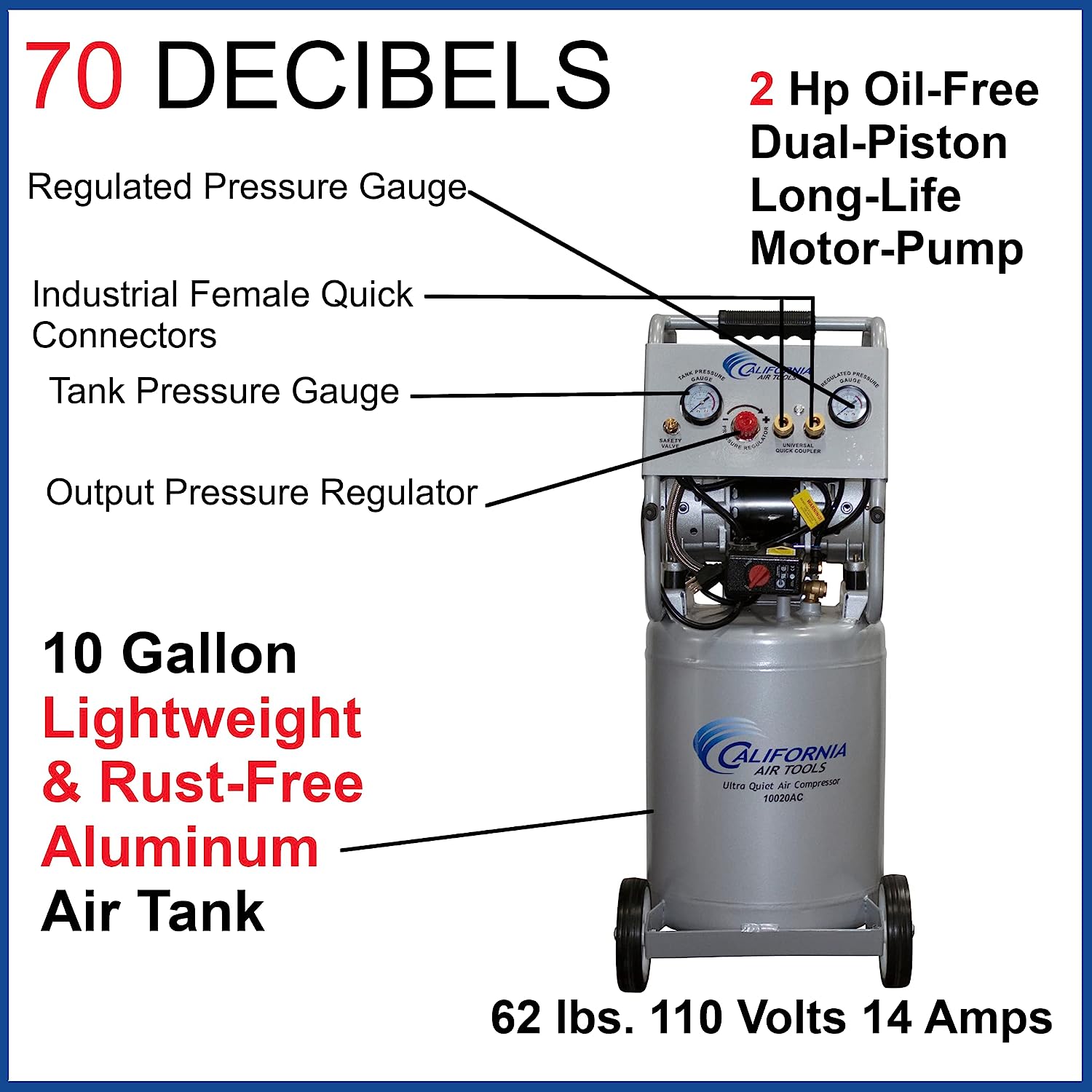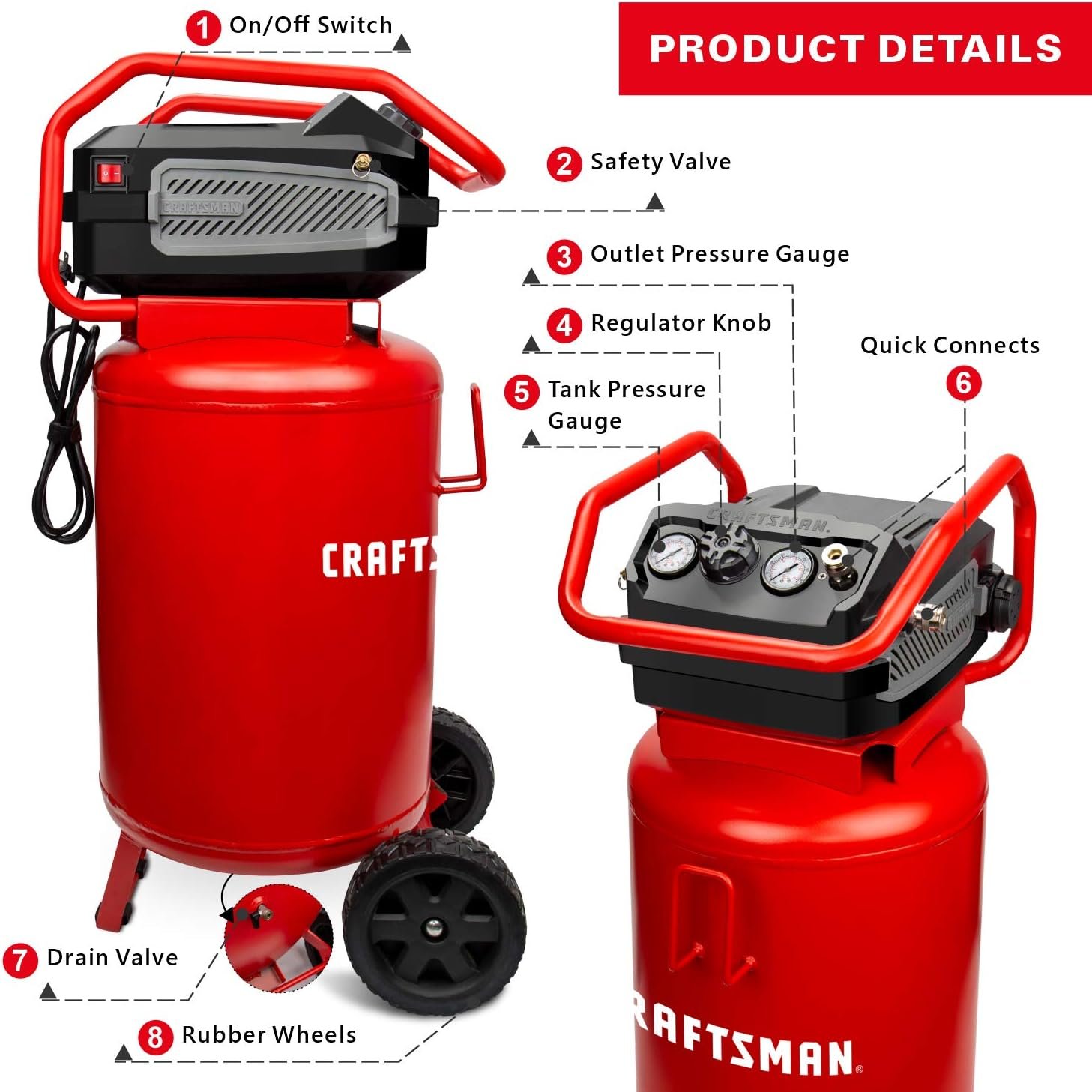In “Understanding the Significance of Air Compressor Tank Size,” we explore the importance of this often overlooked aspect of air compressors. The size of the tank plays a crucial role in determining the performance and efficiency of these machines. From ensuring a steady supply of compressed air to reducing the workload of the compressor motor, the tank size has a significant impact on the overall functionality. By understanding the significance of air compressor tank size, you can make informed decisions when choosing the right equipment for your needs. So, let’s dive into this fascinating topic and unlock the insights behind the significance of air compressor tank size.
Understanding the Significance of Air Compressor Tank Size
Introduction
When it comes to air compressors, one of the key factors that often gets overlooked is the size of the tank. Many people tend to focus solely on the horsepower or pressure rating of the compressor, forgetting that the tank size plays a crucial role in the overall performance and efficiency of the compressor. In this article, we will delve into the significance of air compressor tank size and why it is an important consideration when choosing an air compressor for various applications.
Why is Air Compressor Tank Size Important?
The size of the tank in an air compressor is important because it determines the amount of compressed air that can be stored and used when needed. Imagine a situation where you have a small tank and you need to operate a pneumatic tool that requires a continuous supply of compressed air. If your tank is too small, it will not be able to provide a consistent flow of air to the tool, resulting in intermittent operation and reduced efficiency. On the other hand, a larger tank can store a greater volume of compressed air, allowing for longer run times and better performance.
Factors to Consider When Determining Air Compressor Tank Size
Several factors need to be considered when determining the appropriate tank size for your air compressor. One of the main factors is the type of application or tool you will be using with the compressor. Different tools have varying air consumption rates, and choosing a tank size that can meet the demands of your application is crucial. Additionally, the frequency and duration of tool usage should also be taken into account. If you have frequent and prolonged periods of tool operation, a larger tank size would be more suitable.
Another factor to consider is the compressor duty cycle. The duty cycle refers to the operating time of the compressor compared to the rest period it requires to cool down. If you have a compressor with a high duty cycle, it means it can run for longer periods without overheating. In this case, a larger tank size would be beneficial as it can store more compressed air for continuous operation.
Determining Required Tank Size
To determine the required tank size for your air compressor, you need to consider the air consumption rate of your tools or applications. This can be measured in cubic feet per minute (CFM) or standard cubic feet per minute (SCFM). By calculating the CFM or SCFM requirements of your tools and factoring in the time duration of tool usage, you can estimate the minimum tank size needed.
Another method to determine the required tank size is by using the rule of thumb, which suggests a minimum of 1 gallon of tank size for every 1 CFM of air flow. This rule can be a helpful starting point, but it’s important to note that it may not be suitable for all applications. It’s always recommended to consult the manufacturer’s specifications and guidelines to ensure the chosen tank size meets your specific requirements.
Effects of Air Compressor Tank Size on Performance
The size of the air compressor tank has a direct impact on the performance and efficiency of the compressor. A larger tank size allows for a higher reserve of compressed air, which means the compressor doesn’t have to run as frequently to maintain the desired pressure. This results in reduced wear and tear on the compressor motor, leading to a longer lifespan and increased reliability.
On the other hand, a smaller tank size may require the compressor to run more frequently to meet the demands of the tools or applications being used. This increased running time can lead to higher energy consumption and faster motor wear. Additionally, the more often the compressor runs, the higher the chances of overheating, which can affect both the performance and longevity of the compressor.
Advantages of Larger Tank Size
Opting for a larger air compressor tank size provides several advantages. Firstly, it allows for longer run times without the need for constant motor cycling, resulting in reduced energy consumption. This can lead to cost savings in the long run, especially in applications that require extended periods of tool usage.
Secondly, a larger tank size ensures a steady and consistent supply of compressed air to tools or applications with high air consumption rates. This eliminates the risk of intermittent operation and ensures a smooth workflow. Moreover, the larger volume of compressed air in the tank enables the compressor to handle peak demand periods more effectively, preventing pressure drops and maintaining optimal performance.
Disadvantages of Larger Tank Size
While larger tank sizes offer several advantages, there are also a few disadvantages to consider. One of the main drawbacks is the physical size and weight of the compressor. Larger tanks take up more space, making them less portable and suitable for applications that require mobility. Additionally, the added weight of the tank can make transportation and installation more cumbersome.
Another disadvantage is the upfront cost. Larger tanks tend to be more expensive than smaller ones due to the additional materials and manufacturing processes involved. Therefore, if budget constraints are a concern, a larger tank size may not be the most viable option.
Advantages of Smaller Tank Size
Smaller air compressor tank sizes have their own set of advantages. Firstly, they are more compact and lightweight, making them highly portable and suitable for applications that require mobility. If you frequently need to transport your compressor to different job sites or use it in tight spaces, a smaller tank size can be more convenient.
Secondly, smaller tanks are generally more affordable than larger ones. They offer a cost-effective option for users who have less demanding applications or infrequent tool usage. If you only require compressed air for shorter durations or intermittent tasks, a smaller tank size can provide ample capacity without unnecessary expenditure.
Disadvantages of Smaller Tank Size
Despite their advantages, smaller tank sizes also come with certain disadvantages. The main disadvantage is the limited storage capacity of compressed air. If you have tools or applications with high air consumption rates or require continuous operation, a smaller tank may not be able to meet the demands effectively. This can lead to frequent compressor cycling and reduced overall efficiency.
Additionally, smaller tanks may experience pressure drops during peak demand periods, causing a decrease in operating pressure. This can result in diminished tool performance and slower task completion. It’s important to carefully assess your specific requirements and consider the potential limitations of a smaller tank size before making a decision.
Conclusion
In conclusion, understanding the significance of air compressor tank size is crucial in selecting the right compressor for your needs. The tank size directly affects the performance, efficiency, and reliability of the compressor. By considering factors such as tool air consumption rates, duty cycle, and duration of tool usage, you can determine the appropriate tank size for your applications. While larger tank sizes offer longer run times and steady air supply, they may not be suitable for all situations due to their size and cost. On the other hand, smaller tank sizes provide portability and affordability, but may struggle to meet the demands of high-consumption tools or continuous operation. It is essential to carefully evaluate your requirements and strike a balance between tank size, functionality, and budget to ensure optimal compressor performance and productivity.
Jennifer is a seasoned mechanical engineer with a passion for precision and innovation. After graduating from Caltech, Jane has dedicated over a decade to the intricate world of air compressors. As a lead test engineer at Pneumatic Performance Labs, she is pivotal in assessing air compressors’ efficiency, safety, and performance. Her meticulous approach has enhanced numerous compressor models, ensuring they meet the highest industry standards.










